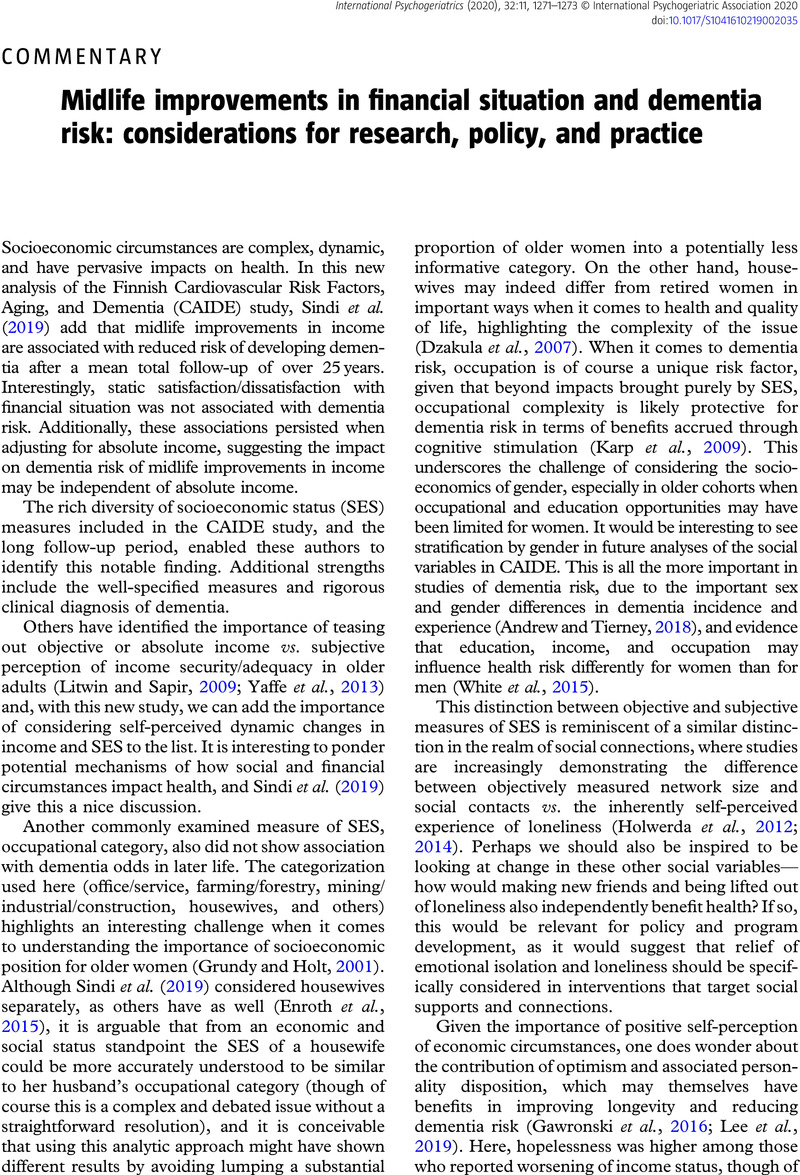No CrossRef data available.
Article contents
Midlife improvements in financial situation and dementia risk: considerations for research, policy, and practice
Published online by Cambridge University Press: 09 December 2020
Abstract

- Type
- Commentary
- Information
- International Psychogeriatrics , Volume 32 , Special Issue 11: Issue Theme: Risk versus Protective Factors for Decline versus Well-Being , November 2020 , pp. 1271 - 1273
- Copyright
- © International Psychogeriatric Association 2020




